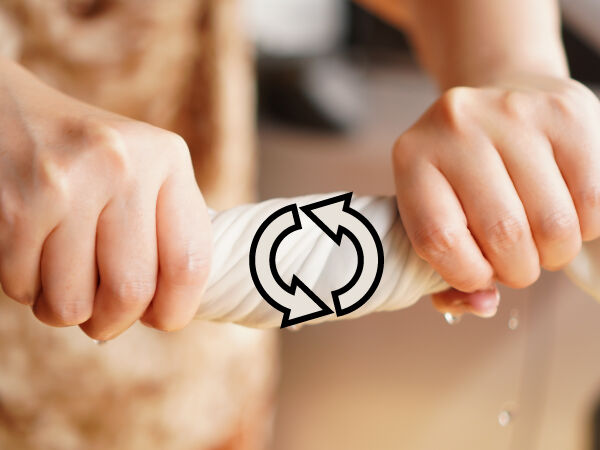Material Forces and Constraints
Forces
A force is an action which can set a body in motion, modify its motion, or deform it.
Modifying the resting state of a body means setting it in motion.
To launch a paper plane in the air, a force must be applied to it.

Applying force to the paper plane to set it in motion
MH-Lee, Shutterstock.com
Modifying the motion of a body means slowing it down, accelerating it, or modifying its trajectory.
To change the speed and trajectory of a puck, you have to act on it by applying a force with the stick.

Applying force to the puck to modify its trajectory
Steve Gilbert, Shutterstock.com
To deform an object means to modify its shape.
A ball of dough is crushed by applying a force of compression.

Compression force applied on a ball of dough
Johnny Bravoo, Shutterstock.com
Constraints
If several forces are exerted simultaneously on a material, it can tend to deform in different ways. The effect of these forces on the material is called a constraint.

Constraints
There are different constraints depending on the number and orientation of the forces exerted.
Compression
|
Application of forces |
Symbol |
|---|---|
|
Two forces applied towards each other |
 |
|
Effect |
|
|
Tendency to crush materials |

Compression constraint on a mountain bike suspension
DaniiD, Shutterstock.com
Tension
|
Application of forces |
Symbol |
|---|---|
|
Two forces applied in opposite directions |
 |
|
Effect |
|
|
Tendency to stretch materials |

Tension constraint on a climbing rope
Dmytro Balkhovitin, Shutterstock.com
Torsion
|
Application of forces |
Symbol |
|---|---|
|
One or two parallel forces in opposite directions applied to an object so that it rotates around an axis |
 |
|
Effect |
|
|
Tendency to twist materials |

Torsion constraint on a dishcloth
Lek in a BIG WORLD, Shutterstock.com
Bending
|
Application of forces |
Symbol |
|---|---|
|
One or more parallel forces in opposite directions, applied at different places on an object |
 |
|
Effect |
|
|
Tendency to fold or bend materials |

Bending constraint on a slackline
Vaclav P3k, Shutterstock.com
Shearing
|
Application of forces |
Symbol |
|---|---|
|
Two parallel and opposing forces applied slightly apart from each other |
 |
|
Effect |
|
|
Tendency to tear or split materials |

Shearing constraint on a sheet of paper
Einar Muoni, Shutterstock.com
Effects of Constraints

The Effects of Constraints
Depending on the nature of the material and on the magnitude of the force applied, the deformation may be invisible or apparent.
If a tension constraint is applied to a non-elastic rope, the rope retains its shape and does not stretch. The deformation is not apparent.

Rope that does not deform
Marc Dietrich, Shutterstock.com
If a tension constraint is applied to a rubber band, it deforms while stretching. The deformation is apparent.

Apparent deformation on a rubber band
Sharomka, Shutterstock.com
Constraints can cause two types of deformation, temporary deformation and permanent deformation.
|
Type of deformation |
Description |
Example |
|---|---|---|
|
Temporary (or elastic) deformation |
The material is deformed when the constraint is applied; it then returns to its original shape when the constraint ceases to be applied. |
A trampoline that deforms when subjected to the weight of a person  Pavel1964, Shutterstock.com |
|
Permanent (or plastic) deformation |
The material deforms when the constraint is applied, but does not recover its original shape when the constraint ceases to be applied. It retains its new form. |
Plasticine that deforms when crushed  DanitzaPulgarM, Shutterstock.com |
Materials have a strength threshold, that is, a maximum force that they can withstand. If the constraint exceeds the strength threshold of the material, the material breaks. This effect is called a fracture.
When inflating a balloon, the rubber undergoes a tension constraint and deforms. If the constraint exceeds the strength threshold of the material, the balloon bursts. This is what is known as a fracture.

Deformation of a rubber balloon
5 second Studio, Shutterstock.com

Fracture of a rubber balloon
